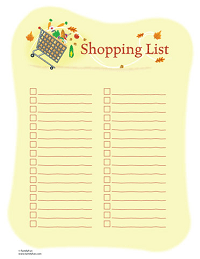
There are many different ways to write poems as well as lots of techniques you can learn to help you improve your writing skill. Here are many of the poetry writing lessons for children that I have created to help you become a better poet, including how to write funny poetry, poetic rhythm, poetic forms and other styles of verse, as well as lesson plans for teachers and video lessons.
How to Write Funny Poetry
- Chapter 1: Writing Poetry
- Chapter 2: How to Rhyme
- Chapter 3: Choosing a Topic
- Chapter 4: Making it Funny
- Chapter 5: Types of Funny Poems
Rhythm in Poetry
Poetic Forms
A poetic “form” is a set of rules for writing a certain type of poem. These rules can include the number of lines or syllables the poem should have, the placement of rhymes, and so on. Here are lessons for writing several common poetic forms.
- How to Write an Acrostic Poem
- How to Create Book Spine Poetry
- How to Write a Cinquain Poem
- How to Write a Clerihew
- How to Write a Concrete or “Shape” Poem
- How to Write a Diamante Poem
- How to Create a “Found Poem”
- How to Write a Free Verse Poem
- How to Write a Haiku
- How to Write a Kenning Poem
- How to Write a Limerick
- How to Write Lyric and Dramatic Poetry
- How to Write a Sonnet
- How to Write a Tanka Poem
- How to Write a Triolet
Other Poetic Styles
There are many different styles of poems. These are not “poetic forms” because they don’t usually have firm rules about length, syllable counts, etc., but they are common enough that many well-known children’s poets have written poems like these.
- How to Write an Alphabet Poem
- How to Write an Alliteration Poem
- How to Write an Apology Poem
- How to Write a “Backward” Poem
- How to Write an Exaggeration Poem
- How to Write a “Favorite Things” List Poem
- How to Write a Funny Epitaph Poem
- How to Write a Funny List Poem
- How to Write a Traditional “Mother Goose” Nursery Rhyme
- How to Write a Fractured Nursery Rhyme
- How to Write an “I Can’t Write a Poem” Poem
- How to Write Nonsense Verse
- How to Write an Onomatopoeia Poem
- How to Write an Opposite Day Poem
- How to Write a “Playing With Your Food” Poem
- How to Write a Repetition Poem
- How to Write Riddle Rhymes
- How to Write a “Roses are Red” Valentine’s Day Poem
- How to Write a Silly Song Parody
- How to Write a Tongue Twister
Reciting Poetry
Other Poetry Writing Lessons
- Can You Make Up Words?
- Describe the Sky – A Poetry Creativity Workout
- Evoking the Senses in a Poem
- Five Ways to Overcome Writer’s Block
- How to Start a Poetry Journal
- “Forced Rhymes” and How to Avoid Them
- That Doesn’t Sound Right to Me
- Twenty Fun Writing Prompts for Kids
Poetry Lesson Plans for Teachers
- Alliteration and Assonance Lesson Plan
- Onomatopoeia Poetry Lesson Plan
- Personification Poetry Lesson Plan
- Rhyme Schemes Lesson Plan
- Simile and Metaphor Lesson Plan
Video Poetry Lessons
Poetry Dictionaries and Rhyming Words Lists
When reading these lessons, you may come across some unfamiliar words. If you see a poetic term and don’t know what it means, you can always look it up in the Poetic Terms Dictionary. Poetry4kids also has a rhyming dictionary and a list of rhyming words you can use to help you write poems.
Other Useful Poetry-Writing Lessons
There are loads of websites on the Internet that offer helpful lessons for children on how to write poems. Here are a few you may find useful:









